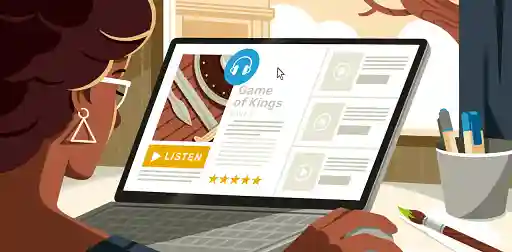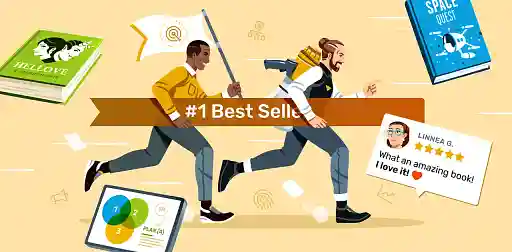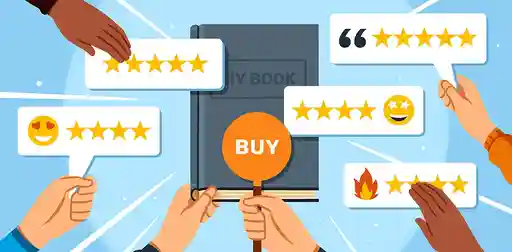Last updated on Mar 18, 2022
How to Identify a Target Audience for Your Book in 3 Steps
About the author
Reedsy's editorial team is a diverse group of industry experts devoted to helping authors write and publish beautiful books.
More about the Reedsy Editorial Team →Do you feel like your book could be a massive hit, if only the right people knew about it? If there were only some way of finding your target audience, you'd be able to reach out and get your novel into their hands or e-readers.
This post will lay out a method on how to identify a target audience. You will find the ‘right people’ for your book, learn to see things from their perspective, and discover the most effective channels for reaching them.
If you're a self-published author, you probably don't have the resources to market to everyone. The only sensible approach is to appeal to people who are actively seeking books just like yours. If those people love your book, word of mouth will quickly spread, and you will start to build a loyal following that eagerly awaits your next publication. So, let’s get to it!

FREE RESOURCE
Reedsy’s Book Marketing Checklist
Tick all the boxes, from ads to networking to social media and beyond.
Step 1. Create a hypothetical, ideal reader
How do you go about figuring out who your book is meant for? While you may have a vague idea, it’s best to be as specific as you can.
That’s because when you have an exact description of one ideal reader (this includes key demographics like age, sex, hobbies, interests, location, marital status, etc.), it becomes a lot easier to find similar people and expand your target audience.
To understand this better, let’s borrow a concept from the business world: the idea of a ‘proto-persona.' This is basically an imaginary person who shares many traits with your most likely customer. How is this useful for authors? Let’s find out.
Creating a proto-persona for your book
Let's start with the understanding that somebody out there will absolutely love everything you write. How do you find them? First, you start by defining all their characteristics as precisely as possible, making assumptions about their gender, age, interests, habits, etc. That’s what a “proto-persona” is: an in-depth description of the perfect reader for your book.
In most cases, your target proto-persona will be based entirely on the kind of book you’re writing. Let’s think of a few examples:
- If you’re working on the next literary masterpiece, you should make sure Richard gets to know about it. Richard is 27, has read every classic novel from the 20th century, and studied English literature in college.
- If you are writing a graphic novel, you should market to Jim. Jim is 21, hasn't missed his favorite comic book convention since he was 14, and loves superheroes.
- If you are writing a book that will turn tired middle-aged ladies into Super Yoga Moms, your proto-persona is Wendy. Wendy is 34, a nutrition freak, and loves pop-philosophers like Alan Watts.
Thinking about your target audience like this helps you figure out which communities you should be reaching out to and how you can get those people interested in your book.
Now that you have a general idea about target audiences, how do you go about finding yours?
Let’s adapt the proto-persona approach specifically for your book. How to identify a target audience isn’t just about which genre your book belongs to. While that’s a good starting point, it’s all about being as precise as you can, remember?

Looking for a professional book marketer?
The best marketers are on Reedsy. Sign up for free to meet them within seconds!
Learn how Reedsy can help you craft a beautiful book.
What’s your story?
Start by describing yourself. Let’s say:
- You are a 27-year-old male
- You live in New York City
- You love the Song of Ice and Fire series
- You are an aspiring fantasy writer
There is a good chance that people who fit a similar description will be also interested in what you write. Get insights into your target audience by thinking about yourself: where do you get all your latest reading recommendations? Even go beyond books and analyze your interests in general — your hobbies, your favorite magazines (or blogs), your shopping habits, etc.
Which books in the market are closest to yours?
If you were to compare your book to other titles that are already out there, which ones would they be? What kind of people comprises the readership of these books? A little bit of analysis will help you further refine your proto-persona.
Since a large part of capturing your audience’s attention depends on how you engage with them, notice how your favorite authors interact with their fans.
 Love Stephen King’s books? Which of his tweets do you see the maximum number of people engage with? Think Hugh Howey is the best thing to happen to dystopian fiction since 1984? Which of his blog posts made you giddy with excitement?
Love Stephen King’s books? Which of his tweets do you see the maximum number of people engage with? Think Hugh Howey is the best thing to happen to dystopian fiction since 1984? Which of his blog posts made you giddy with excitement?
Finding out what audiences similar to yours enjoy will also teach you how to interact with them online.
Emulate people who are already where you want to be, but do it with your own unique voice. There’s plenty of inspiration out there; just make sure you aren’t simply copying others.
Step 2. Think like your reader
Social media is ideal for both understanding potential readers and connecting with them. While we’re primarily dealing with the former in this post, you can read our piece on best practices for authors on social media.
Facebook Audience Insights can give you incredibly detailed data on audience demographics and interests. By searching for people whose interests include Stephen King, we know their age and gender split, geographical location, as well as other pages they’ve liked.
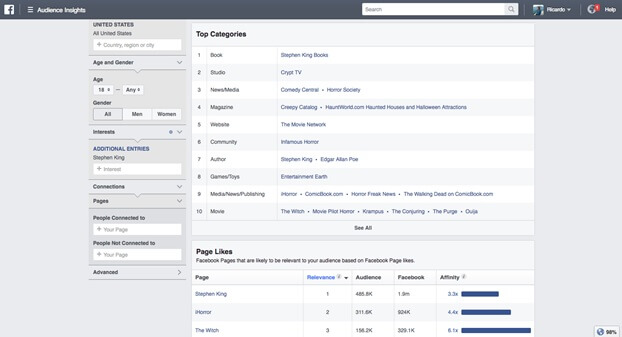
Other pages liked by fans of Stephen King
The same applies to other social networks like Twitter and Google+. If you want to find out who is talking about a book (or an author, an interest, pretty much anything), you can use Twitter Advanced Search. Searching for ‘game of thrones’ tells you who is talking about it, what they are sharing (videos, memes, fan theories), whether their reactions are positive or negative, etc.
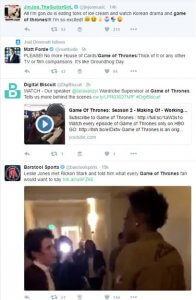
Twitter Advanced Search results for ‘Game of Thrones’
By using a combination of some of these tools you can extrapolate insightful information relevant to your project, that will help you in finding the right approach to reaching your target audience.
Step 3. Hone in on your real audience
You can only go so far with assumptions about who your readers are, what they like, where they hang out, and how they behave. Once you have these assumptions, you need to test them. How exactly do you go about doing that?
Testing assumptions with Facebook Advertising
To be a successful author you have to start thinking like an entrepreneur. How do you find out whether your book will appeal more to fans of Lee Child or James Patterson? Create two Facebook ads with the same image and a similar copy ("fans of X will love this!") and target them at these two respective target audiences. For example, if fans of Lee Child respond better to your ad (higher click-through rate), then you have your answer.

FREE COURSE
Facebook Ads for Authors
In 10 days, learn to boost book sales with targeted Facebook ads.
You can run a similar test on your image, or on the tone and length of the text you’re using.
If you have tons of questions swimming in your head at this point, that’s understandable! Check out our insightful interview with author Mark Dawson on the Reedsy blog for a fun and easy introduction to Facebook advertising for authors.
What’s your niche?
Use forums like Goodreads to reach people who fit the description of your proto-persona, and expand your network to start conversations and get valuable feedback from real readers.
Promotional activities are mutually beneficial if you reach the right communities. In exchange for a free copy, you can ask your newly found readers to review your book.
The next steps…
Most authors and book marketers recommend choosing one or two platforms and focusing your marketing efforts on them. This is a very good idea if you’re just starting out and don’t have the bandwidth to execute a massive marketing plan.

FREE COURSE
Book Marketing 101
Learn seven tried-and-true strategies for boosting book sales.
💡 Pro tip: Submit your book to Reedsy Discovery to launch your book in a big way to reach hundreds of thousands of readers — and a pool of professional reviewers!
You have to hold the attention of your fans by consistently providing them with value, whether that be by releasing free short stories or engaging with them on social media. The importance of thinking from your reader’s perspective cannot be stressed enough, only because most authors ignore it completely.
A loyal following will give you real-time feedback and insights into what your fans enjoy. You’ll be surprised at the amount of traction your book gets just through word of mouth.
So don’t waste any more time on directionless marketing — find out where your audience is hanging out right now!
Do you have any unique methods of how to identify a target audience? How important is it to have a clear strategy for finding your audience? Leave your thoughts, comments, and questions below.

